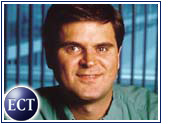A greater than expected number of small and local businesses have turned to the Internet to sell their products and services — causing some members of the traditional media to fear for the worst.
According to a study of fourteen major markets conducted by the Princeton, New Jersey-based Kelsey Group and San Francisco-based ConStat, seventeen percent of businesses involved in local commerce advertise on the Internet — compared with nineteen percent using newspapers and thirty-seven percent using phone books. The high percentage of Internet advertisers surprised the authors of the survey, according to USA Today.
At least one print media giant seems to see the handwriting on the wall. The New York Times Co., the fifth-largest newspaper company, said last month it will create a new unit to house its growing Internet businesses — including its online edition. In fact, some analysts predict it might take the new division public — letting it ride the crest of Internet mania.
But many smaller publications, instead of embracing the “new media,” are shunning it. While many of them have set up token Web sites, they haven’t invested the necessary resources to create any leverage on the Internet. They refuse to view their online publications as separate entities that will enhance their hard copy products, instead viewing them as a threat to their subscription bases and advertising revenue.
When Yang speaks people listen
This shift of the advertising paradigm is no surprise to Jerry Yang, co-founder of Yahoo! However, last week in Cannes France, Yang told Bloomberg that the movement of advertising away from TV and print to the Web isn’t about to change the media world as we know it — anytime soon.
“I don’t think broadcast will go away,” Yang said. “But as more and more ad budgets get spent online — we’re still less than one percent of the total advertising spent — I don’t think we’ll replace any of the other mediums, that’s never happened before, but what we’ll see is something that’s very differentiated.”
One way Web advertising is different, Yang said, is through “mass-customization.” He called this the “Holy Grail” of Web advertising.
“On the Internet, people can see the path to get there. This is where Internet advertising is going over the long term where there is enough one-on-one as the advertiser needs ,” Yang added.
Long way to go
Nevertheless, Yang pointed out that privacy issues, as well as, technology issues would have to be dealt with and resolved before Internet advertising can ever reach its true critical mass.
Meanwhile, many in the traditional media seem to be like poker players folding before they’ve even played their hands.





































Social Media
See all Social Media